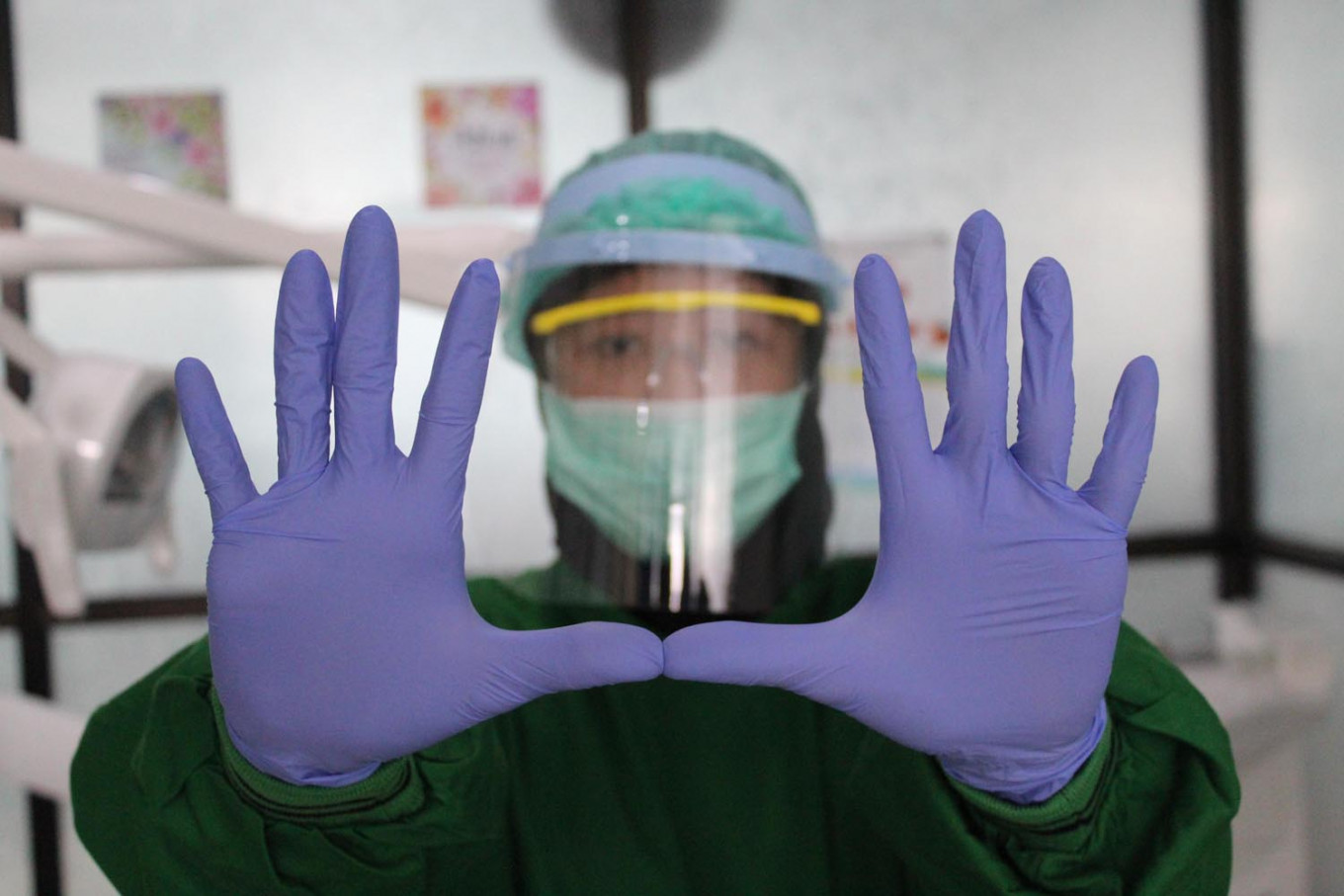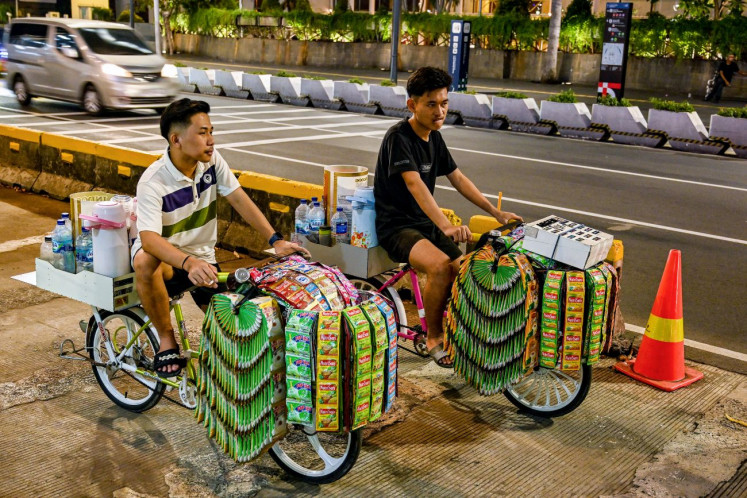Popular Reads
Top Results
Can't find what you're looking for?
View all search resultsPopular Reads
Top Results
Can't find what you're looking for?
View all search resultsBattling COVID-19: Protecting frontline workers is key to containing contagion
Indonesia can learn from the mistakes of other countries, especially those that have emerged as new epicenters of the pandemic.
Change text size
Gift Premium Articles
to Anyone
T
he persistent issue for Indonesian medical professionals is largely being portrayed at present as one of sourcing extra masks, goggles, hazmat suits and other personal protective equipment (PPE). But they face multiple complications that are rarely reported.
Doctors and medical residents of all specialties are on the front lines in the COVID-19 pandemic, and we are not just in the emergency room, but also in outpatient clinics, general wards and labs, at reception, in offices, in the dispensary and almost every corner at all referral hospitals.
Every time we arrive at the hospital, we are resolved to help patients, not only those with the coronavirus, but also all other people with illness or injury. The orthopedic residents are treating patients with broken legs, the pediatric oncology residents are providing chemotherapy treatment for child patients with cancer, and general practitioners are providing medical consultations and treatment while running triage, assigning varying degrees of urgency to patients.
All this happens in a single place: the hospital.
Considering the COVID-19 outbreak and the priority of treating patients according to specialty cases, we don’t want to harm patients or ourselves, so we do everything we can to protect ourselves and our patients using PPE – or anything else that is available, like duct-taped raincoats.
The problem that is receiving the most attention — the shortage of basic PPE— is theoretically the easiest to resolve: produce and ship more supplies and detain the PPE hoarders. After healthcare workers raised the alarm about shortages, the government started distributing tons of PPE supplies from China using military aircraft.
The Indonesian Textile Association (API), in collaboration with the Indonesian Fiber and Filament Yarn Producers Association (APSyFI), is producing more protective gear and masks to meet the high demand. No physician would refuse going to work if they are properly protected.
Those on the front lines are most at risk, not simply of catching the virus, but of contracting its most virulent forms. So far, however, the countries that lag behind in understanding and responding to the risks COVID-19 pose to health workers are also those countries that are lagging behind in suppressing community transmission.
Let’s learn from the nations that have been hardest hit by the virus as cases in China decreased.
With about 80,500 cases and more than 8,000 deaths, Italy was hardest hit by the COVID-19 epidemic – until the United States overtook it on March 26 with almost 82,500 cases. The Italian healthcare system has been using all available resources to respond to the flood of COVID-19 patients. But doctors and nurses are near breaking point, and they have warned the world to learn from Rome’s mistakes and move from patient-centered care to community-centered care. Treating more patients at home during early symptoms is a rational strategy during a pandemic, and it requires public cooperation and awareness.
Major hospitals in Italy have become sources of infection, with COVID-19 patients indirectly transmitting the virus to other, uninfected patients. Health workers, especially those that do not have symptoms, carry the contagion to other patients and back into the community. Asymptomatic doctors can unwittingly spread the virus before they need treatment or to be quarantined; they are fighting alongside their overwhelmed troops.
In a world with an ideal viral response strategy, hospitals would be testing medical staff periodically to give them the all-clear, and those who are carriers can be isolated. But the availability of testing kits is still limited, so patients with symptoms are being prioritized.
What’s happening in Italy is partly because they didn’t protect the doctors. Now there are fewer doctors, and the sad thing about all this is that it was preventable through protection and adequate testing.
Thankfully, Indonesia’s frontline workers are among the top priority groups for getting tested using the newly available kits.
Meanwhile, facing the pandemic with this microscopic enemy has led to a change in role for surgeons from their usual, daily practice. The key aim of surgical staff in this kind of situation is to maintain emergency surgery provisions, including major trauma.
If the public keeps ignoring government guidance and restrictions, COVID-19 cases will only continue to grow. Elective surgery will likely be delayed where possible, with priority for only emergency cases to minimize the use of essential items including beds in intensive care units, PPE, cleaning supplies and ventilators.
In a surgical setting, the risks start with the anesthesia procedure. While all medical professionals in operating theaters are at risk, anesthetists may be particularly at risk of contracting COVID-19 through droplets when intubating a patient for surgery if they lack sufficient protection.
Protecting health professionals also means protecting the community. Indonesian doctors are risking their lives, but our greatest fear is that we could shift from being part of the solution to becoming part of the problem.
***
The writer is an orthopedic and traumatology resident at Dr. Soetomo Regional General Hospital and a graduate of the Airlangga University medical school in Surabaya, East Java.










